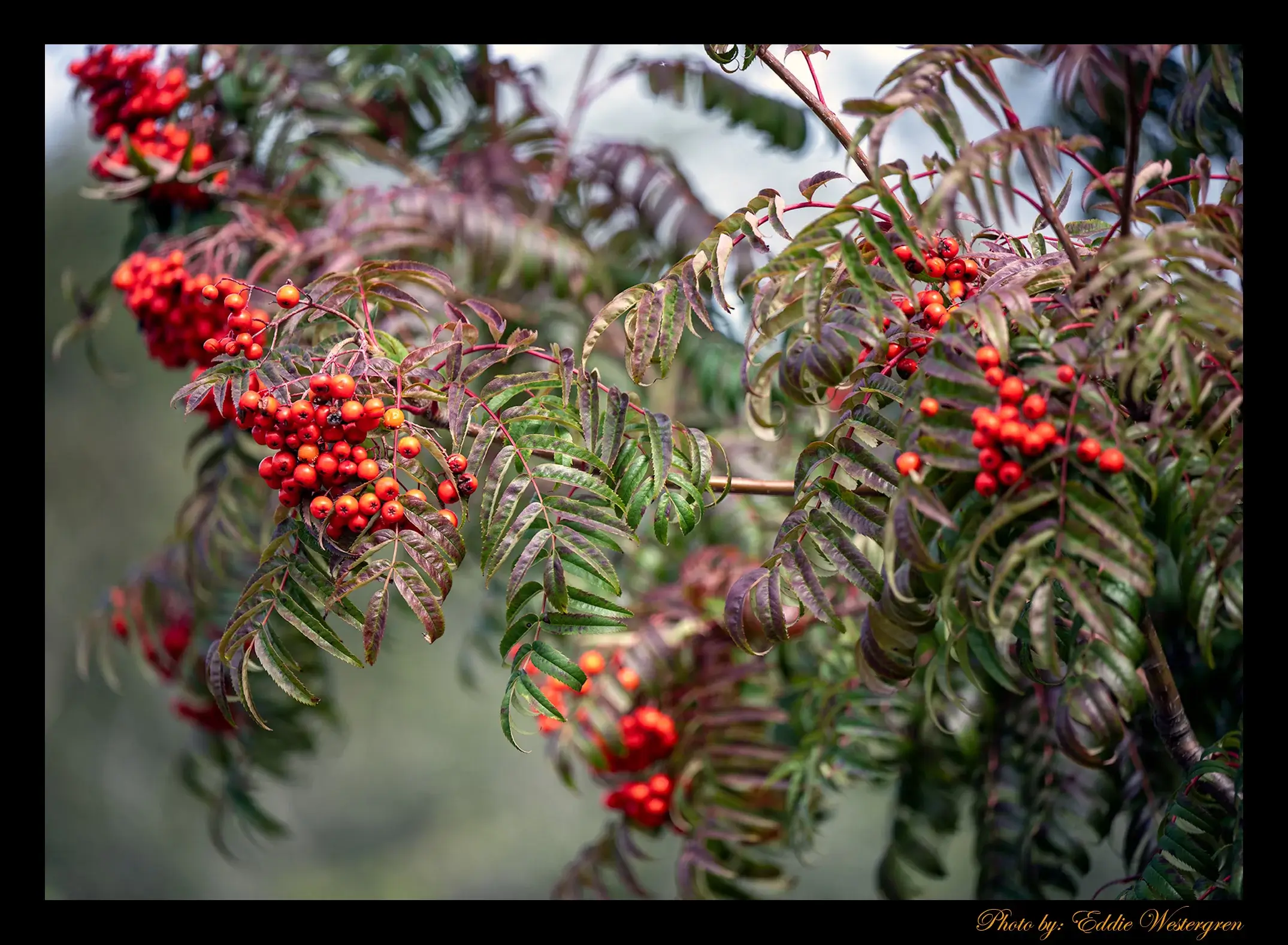The rowan tree,
also known as Sorbus aucuparia or the mountain ash. It is one of the most beloved and symbolic trees in European and Celtic folklore. Despite its common name, it is not related to the true ash tree but belongs to the rose family, Rosaceae. Native to cool regions across Europe, Asia, and North America, the rowan is a hardy, graceful tree known for its feathery leaves, creamy white spring blossoms, and clusters of bright red or orange berries that glow vividly in autumn and early winter.
The rowan’s resilience
has long made it a symbol of protection and endurance. It thrives in high, rocky, and exposed places—hence its other common name, the mountain ash. It is one of few trees capable of growing in poor, acidic soils where other species struggle. Its adaptability allows it to flourish in both forests and urban settings, where it provides vital food for birds and small mammals. The berries, though bitter to human taste, are a rich source of nutrition for wildlife, especially in winter when other foods are scarce.
In folklore, the rowan tree has long been considered magical. In Celtic traditions, it was known as the “tree of life” and believed to ward off evil spirits and enchantments. People would plant rowans near homes and gateways or weave crosses from its twigs for protection. Its berries were thought to bear the mark of the pentagram, symbolizing balance and spiritual power. The Norse associated the rowan with the goddess Idunn, guardian of the apples of youth, while Scottish Highlanders carried sprigs of rowan for good luck.
Beyond its mythic reputation,
the rowan has practical uses. Its wood, though relatively light, is strong and was historically used for tool handles, walking sticks, and furniture. The berries can be cooked into jellies, wines, and preserves. When combined with apples, they make a sharp, tangy flavor that pairs well with game meats. Medicinally, rowan berries were once used as a remedy for sore throats and scurvy due to their high vitamin C content.
Today,
the rowan remains a cherished ornamental tree, admired for its beauty through all seasons—from spring blossoms to fiery autumn fruit. More than that, it endures as a living emblem of protection, vitality, and harmony with nature. 
